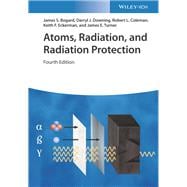Discover the keys to radiation protection in the fourth edition of this best-selling textbook
A variety of atomic and sub-atomic processes, including alpha, beta, and gamma decay or electron ejection from inner atom shells, can produce ionizing radiation. This radiation can in turn produce environmental and biological effects both harmful – including DNA damage and other impacts of so-called ‘radiation sickness’ – and helpful, including radiation treatment for cancerous tumors. Understanding the processes that generate radiation and the steps which can be taken to mitigate or direct its effects is therefore critical in a wide range of industries and medical subfields.
For decades, Atoms, Radiation, and Radiation Protection has served as the classic reference work on the subject of ionizing radiation and its safeguards. Beginning with a presentation of fundamental atomic structure and the physical mechanisms which produce radiation, the book also includes thorough discussion of how radiation can be detected and measured, as well as guide-lines for interpreting radiation statistics and detailed analysis of protective measures, both individual and environmental. Now updated by a new generation of leading scholars and researchers, Atoms, Radiation, and Radiation Protection will continue to serve global scientific and industrial research communities.
Readers of the fourth edition of Atoms, Radiation, and Radiation Protection will also find:
- Detailed updates of existing material, including the latest recommendations of the ICRP and NCRP
- Treatment of current physiokinetic and dosimetric models
- All statistics now presented in SI units, making the book more globally accessible
Atoms, Radiation, and Radiation Protection is a foundational guide for graduate students and researchers in health physics and nuclear physics, as well as related industries.








